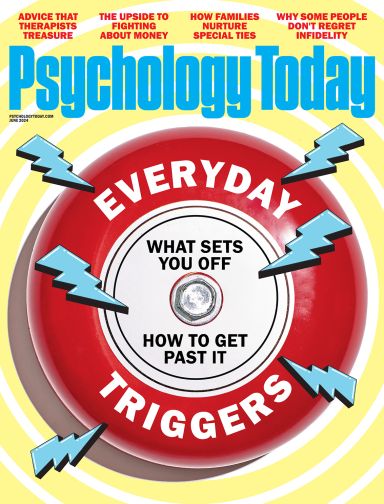Workplace Dynamics
4 Worker Archetypes—From Best to Worst to Work With
Competence and humility are vital traits in the workplace. Here's why.
Posted June 25, 2024 Reviewed by Michelle Quirk
Key points
- "Humble stars" are approachable and supportive, making them great team players and leaders.
- People prefer to work with those who are likable, even if they aren’t as competent.
- The expertise of "competent jerks" may be valued, but their abrasive behavior can cause friction and conflict.

A 2022 study published in the International Journal of Environmental Research and Public Health introduced the “humility-competence model,” consisting of four archetypes of employees in the workplace.
These characterizations are based on the qualities of humility and competence and to which degree each archetype displays them. Researchers found that these archetypes have significant implications for workplace relationships and productivity.
Here are four types of individuals you may find in the workplace and how most people view them, based on the study.
1. The Humble Star
“Humble stars” are both highly competent and humble. They tend to be highly skilled in their work while also being modest about their abilities. They are likely to share credit with their team, be open to feedback, and be willing to learn and grow personally and professionally.
As humble personalities, they are approachable and supportive, making them great team players and leaders. Their combination of competence and humility often inspires trust and respect from colleagues.
Researchers found that humble stars were the most likable personalities out of all four archetypes, both personally and professionally, receiving the most cooperation from their colleagues at work.
“We should emphasize humility to create a workplace environment that facilitates communication. The humble acknowledgment of own limitations makes humble stars less threatening to colleagues,” the researchers write.
2. The Humble Fool
Individuals embodying the “humble fool” archetype possess a high level of humility but lack the necessary skills or knowledge to perform their jobs effectively. They are often eager to learn and improve and are willing to take direction and feedback from others.
Researchers found that humble fools are the second most likable of all archetypes in personal workplace interactions, but do not fare as well in professional contexts, as they are often bypassed for more competent colleagues.
However, research shows that people prefer to work with those who are likable, even if they aren’t as competent. While they may not contribute significantly in terms of expertise, their positive attitude, willingness to support others, and unique ability to bring people together can still add value to a team.
“Having a humble character may compensate for a lack of competence in interpersonal interactions. Humble individuals make team members feel secure to voice ideas and suggestions, without worrying about receiving disrespectful remarks. Having a humble leader generates more team information sharing and facilitates a psychologically safe environment, both interpersonally and within the team, ” the researchers write.
3. The Competent Jerk
“Competent jerks” are highly competent but lack humility. They tend to be arrogant and difficult to work with, and they are often dismissive of others’ ideas and contributions. Their expertise may be valued, but their abrasive behavior can cause friction and conflict within the team.
Researchers found that while competent jerks were understandably not as likable as humble stars and humble fools in their personal relationships with colleagues, they were preferred over humble fools in a professional capacity, eliciting higher collaboration and cooperation at work. In terms of performance, they were no different than humble stars.
“Working with people who are not humble may be less enjoyable. However, when an arrogant colleague has competence to offer, they will improve team performance. Therefore, competence may compensate for a lack of humility, especially in a workplace setting where performance and goal attainment are highly regarded,” the researchers explain.
Researchers realized that based on the context, whether interpersonal or professional, different qualities were valued at different times. One would much prefer to have lunch and socialize with a humble colleague than an arrogant one, but would most likely seek the most competent person in a professional setting to complete tasks efficiently, even if their demeanor is highly unlikable.
4. The Incompetent Jerk
Unsurprisingly, the least liked archetype—both personally and professionally—are “incompetent jerks,” who display alarmingly low levels of both competence and humility. They are usually ineffective in their roles and are often unwilling to acknowledge these deficiencies or seek improvement.
Their arrogance and inability to perform can lead to significant challenges in the workplace. Such individuals also tend to resist feedback and can be a source of frustration for colleagues, ultimately dragging down team performance and morale.
Researchers also found that senior colleagues have less tolerance for juniors who are incompetent jerks than those who are competent jerks. This archetype is also least likely to receive professional cooperation from their colleagues.
“Having a diverse team of members of the four archetypes could provide a balanced dynamic within a team. Although competent jerks may selfishly withhold information or produce conflict, humble stars and humble fools may buffer the conflict by creating a non-hostile environment,” the researchers conclude.
While humble stars are universally preferred for their blend of skill and modesty, competent jerks may still be valued for their expertise despite their challenging personalities. The humility-competence model highlights the importance of both qualities.
Organizations should prioritize these traits in their hiring and team-building practices, recognizing that a mix of archetypes brings unique strengths and potential challenges to the team dynamic. This balanced approach can create a more productive, respectful, and collaborative workplace.
A version of this post also appears on Forbes.com.




